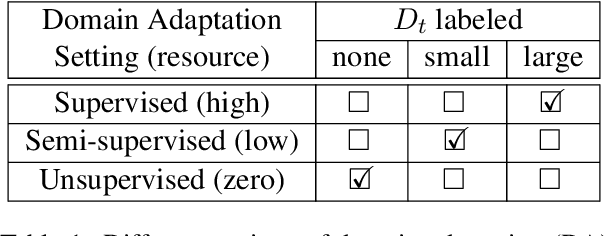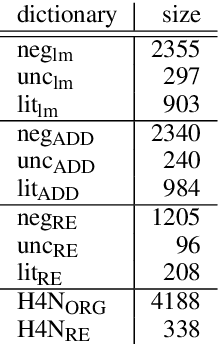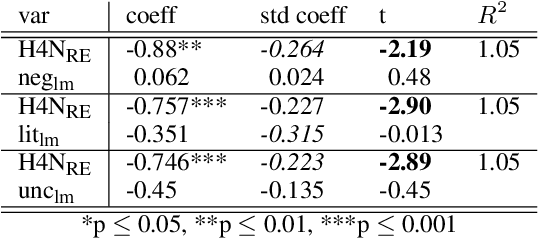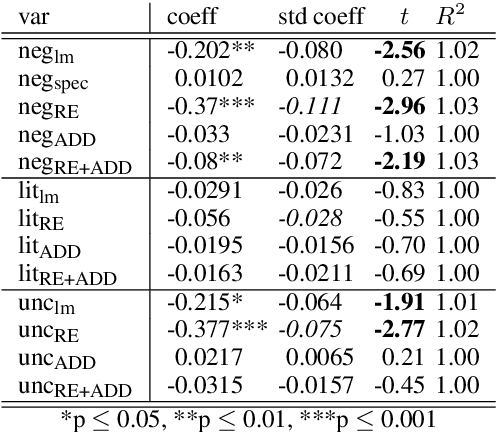Marina Sedinkina
Domain Adaptation for Sparse-Data Settings: What Do We Gain by Not Using Bert?
Mar 31, 2022



Abstract:The practical success of much of NLP depends on the availability of training data. However, in real-world scenarios, training data is often scarce, not least because many application domains are restricted and specific. In this work, we compare different methods to handle this problem and provide guidelines for building NLP applications when there is only a small amount of labeled training data available for a specific domain. While transfer learning with pre-trained language models outperforms other methods across tasks, alternatives do not perform much worse while requiring much less computational effort, thus significantly reducing monetary and environmental cost. We examine the performance tradeoffs of several such alternatives, including models that can be trained up to 175K times faster and do not require a single GPU.
Automatic Domain Adaptation Outperforms Manual Domain Adaptation for Predicting Financial Outcomes
Jun 25, 2020



Abstract:In this paper, we automatically create sentiment dictionaries for predicting financial outcomes. We compare three approaches: (I) manual adaptation of the domain-general dictionary H4N, (ii) automatic adaptation of H4N and (iii) a combination consisting of first manual, then automatic adaptation. In our experiments, we demonstrate that the automatically adapted sentiment dictionary outperforms the previous state of the art in predicting the financial outcomes excess return and volatility. In particular, automatic adaptation performs better than manual adaptation. In our analysis, we find that annotation based on an expert's a priori belief about a word's meaning can be incorrect -- annotation should be performed based on the word's contexts in the target domain instead.
 Add to Chrome
Add to Chrome Add to Firefox
Add to Firefox Add to Edge
Add to Edge